Air Canada has today unveiled the newest member of its fleet, the Airbus A220-300, and I had the pleasure of attending the official launch event at the airline’s Montreal headquarters this morning.
The Airbus A220 is the latest step in Air Canada’s long-term endeavour to modernize their fleet, and the state-of-the-art medium-range jet is set to revolutionize the passenger experience on flights within North America and beyond.
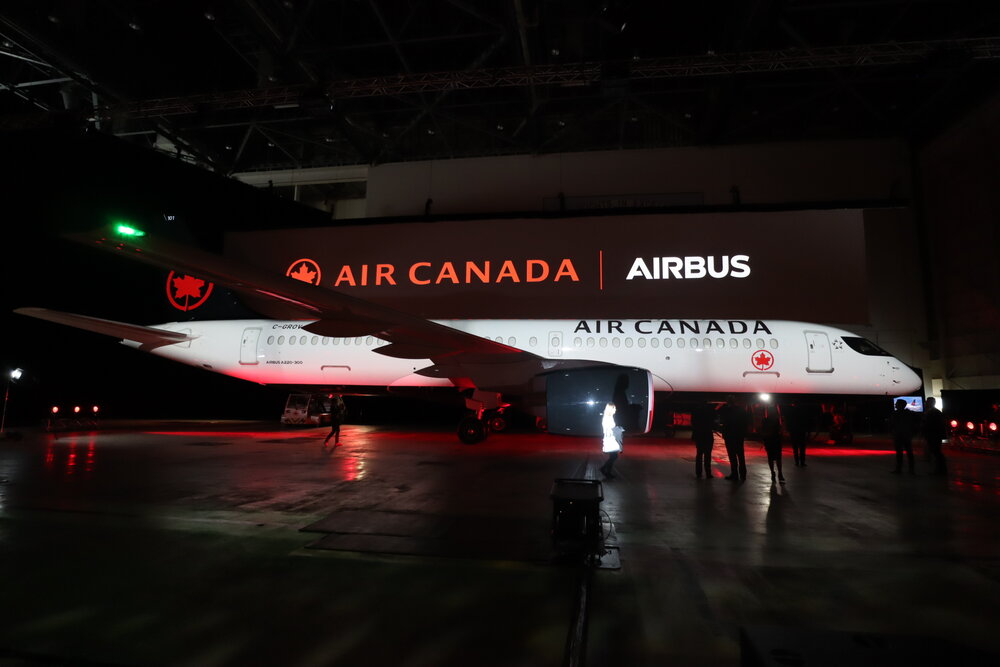
Air Canada Airbus A220 launch event
About the Airbus A220
Air Canada’s official launch of the Airbus A220 marks the culmination of one of the most significant stories in Canadian aviation in recent years.
The aircraft was originally designed by our very own Bombardier under the name “C-Series” in Mirabel, Quebec, although the program began struggling financially around 2015, and the future of the aircraft’s production appeared to be in doubt.
It was at this time that Air Canada placed a firm order of 45 Bombardier C-Series aircraft, becoming the first North American airline to do so and throwing much-needed support behind the aircraft’s development.
European aviation giants Airbus would later acquire a 50.01% majority stake in the program and rebrand the plane as the Airbus A220, which first entered service in 2016 with Swiss and AirBaltic.
The first of Air Canada’s 45 orders was delivered in December 2019, with the inaugural commercial flight scheduled for tomorrow, January 16, between Montreal and Calgary on Air Canada Flights 317 and 318.

As more aircraft are delivered, they will initially be assigned to domestic and transborder routes out of Toronto and Montreal, to destinations such as Edmonton, Winnipeg, Ottawa, and New York LaGuardia. Meanwhile, the first dedicated A220 routes will be Toronto–San Jose and Montreal–Seattle, both of which are launching in May 2020.
From a fleet modernization perspective, the Airbus A220s are expected to replace Air Canada’s aging Embraer 190s while also carrying some of the capacity on flights that currently experience lighter loads on their Airbus A319s and A320s.
The A220 will supplement the existing route network, while also expanding the range of potentially profitable routes within North America and even to Latin America, all while delivering a much more comfortable passenger experience and reducing fuel emissions by 15% compared to the outgoing aircraft.
And speaking of the passenger experience, let’s bring you inside the aircraft for a closer look at what you can expect when flying the Air Canada Airbus A220…
Inside the Air Canada Airbus A220
Business class on the Air Canada Airbus A220 consists of 12 seats across three rows in a 2-2 configuration. The seating arrangement is similar to Air Canada’s existing North American business class product on most of their narrow-body fleet, but the seats themselves are much more modern and stylish compared to the worn-out fabrics and creaky tray tables on the older aircraft.

Air Canada Airbus A220 – Business class
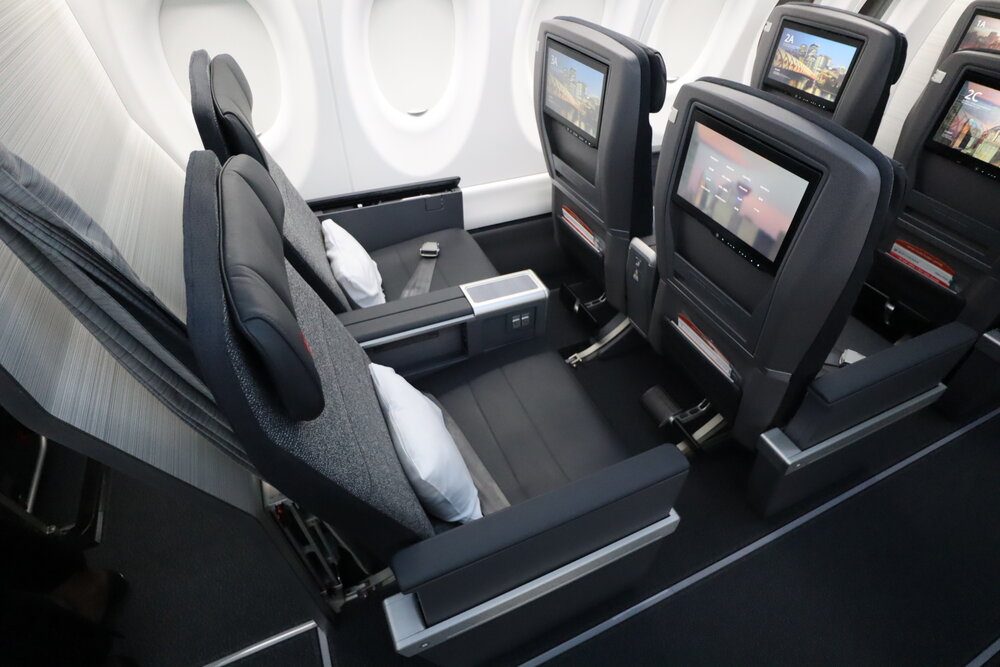
Air Canada Airbus A220 – Business class
Every business class seat has a high-resolution entertainment screen, a tray table that folds out very ergonomically from the armrest, ample legroom, a footrest, and the ability to recline your seat.
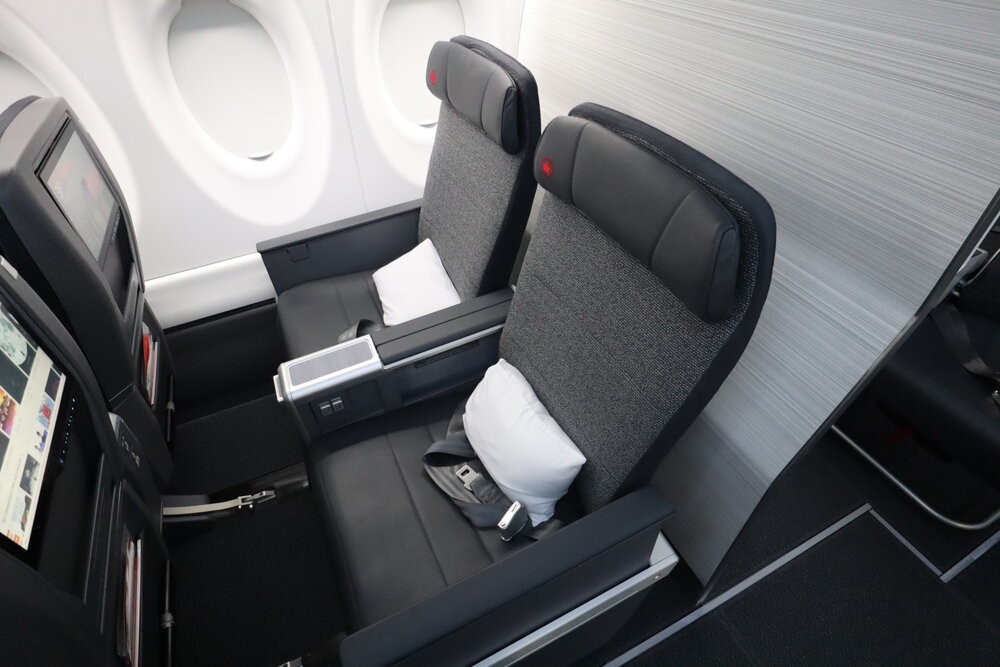
Air Canada Airbus A220 – Business class
Unlike the older recliner seats, the bottom half of the seat provides further support for your legs, since it moves upwards at an angle when the seat is fully reclined.
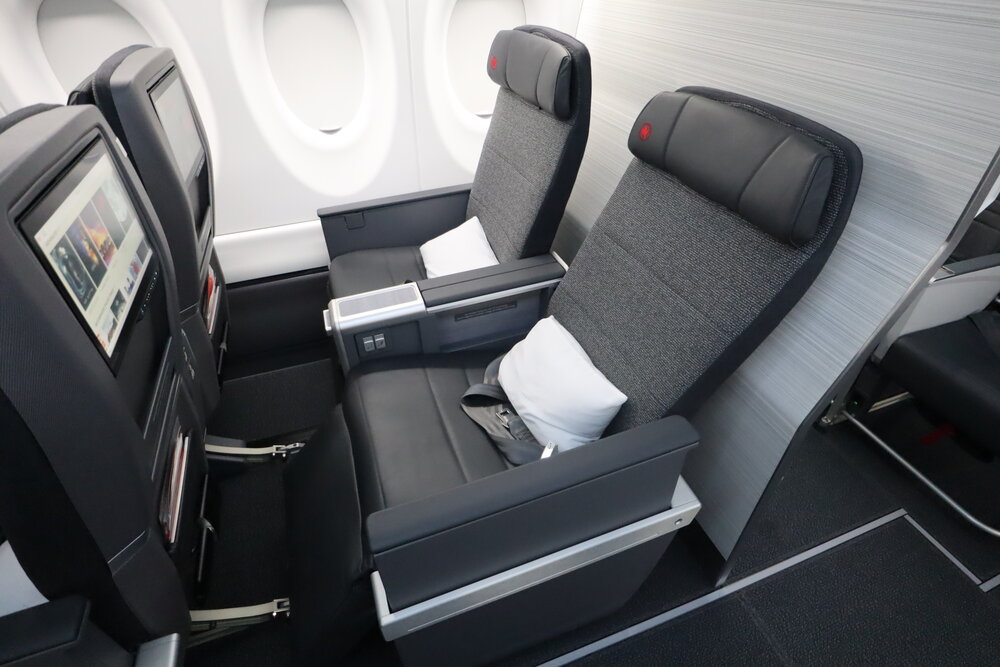
Air Canada Airbus A220 – Business class seat, reclined
This product is a dramatic improvement from the current business class seats on medium-haul flights, especially on routes such as Toronto–Edmonton or Montreal–Calgary where maximum comfort is desired but a lie-flat bed wouldn’t quite be necessary.
Meanwhile, if I were flying on transcontinental routes such as Toronto–San Francisco or Montreal–Los Angeles, my first choice would definitely be one of the Boeing 787 Dreamliners and their lie-flat beds, but I’d be very happy with the elevated passenger experience on the Airbus A220 as well. In fact, I’d probably choose the A220 on its dedicated routes (such as Montreal–Seattle) for the convenience factor, instead of adding a connection in Vancouver, even if that were to come with a lie-flat bed.
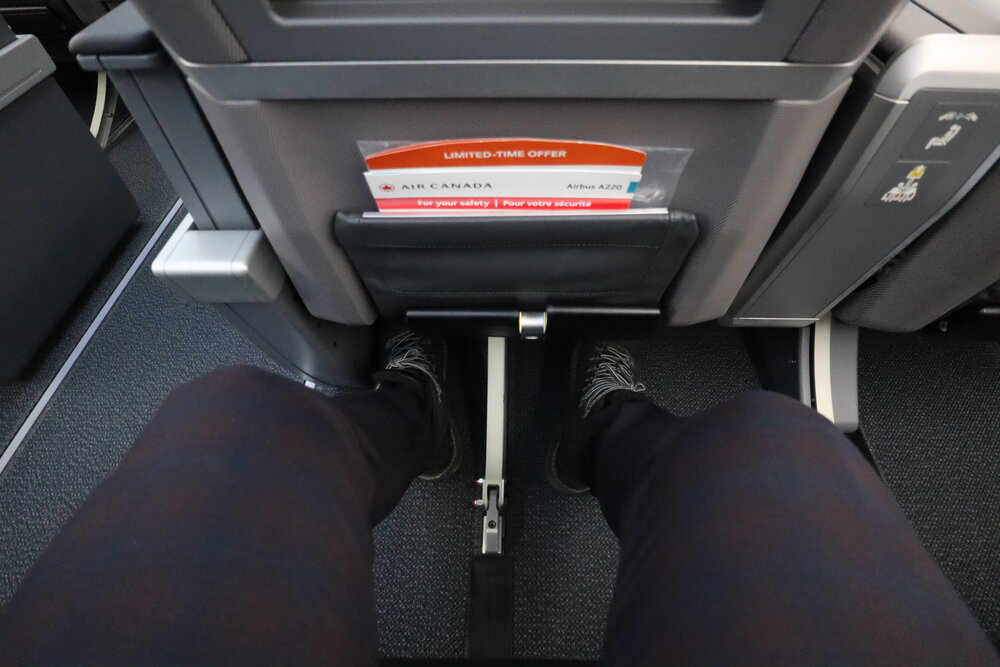
Air Canada Airbus A220 – Business class legroom
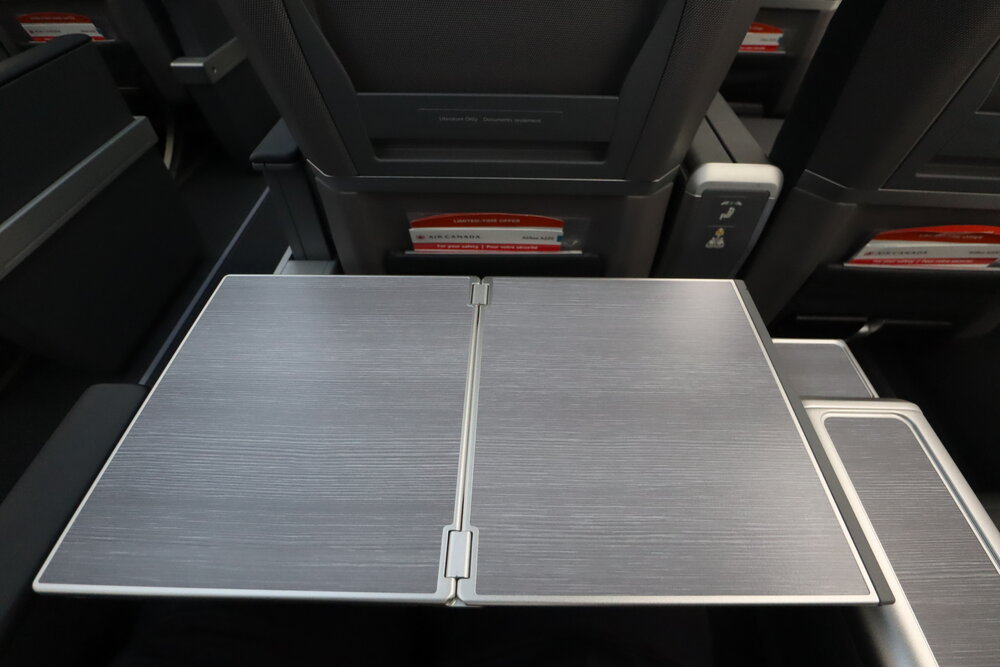
Air Canada Airbus A220 – Business class tray table
The economy class seats are even more of an upgrade from the current status quo, if you ask me. The seats are arranged in a 2-3 configuration instead of the 3-3 configuration on comparable aircraft, meaning that the Airbus A220’s economy cabin will have far more seat width, shoulder space, and overhead bin space compared to any of its narrow-body peers.
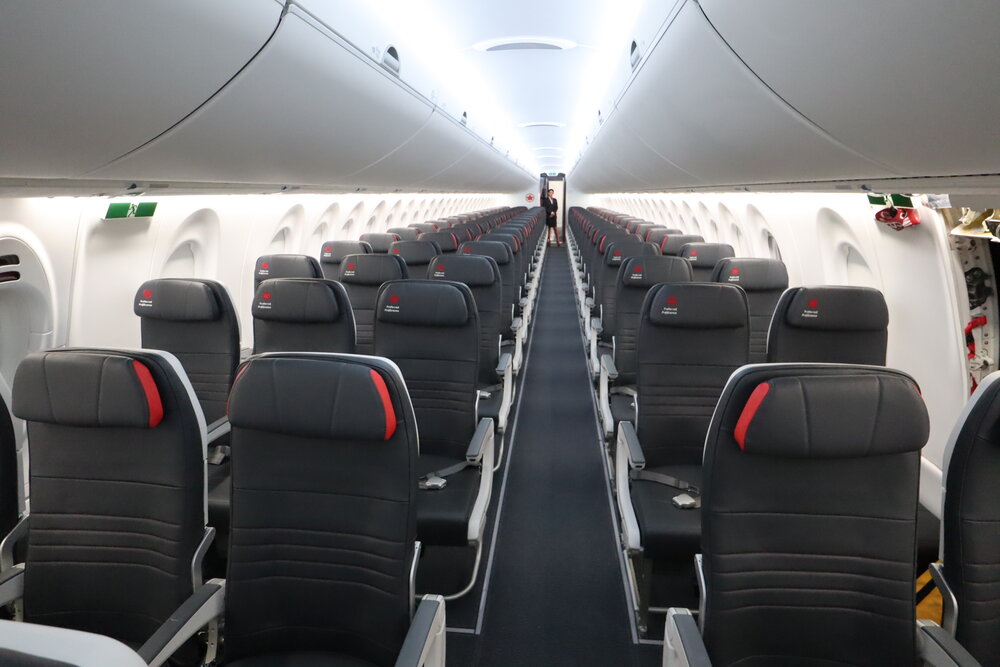
Air Canada Airbus A220 – Economy class
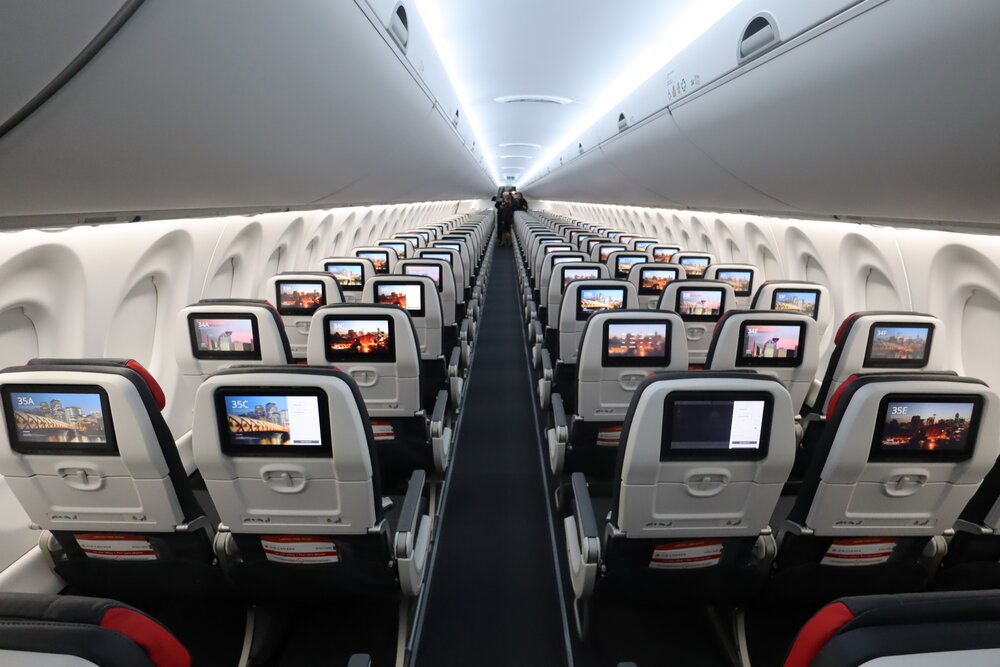
Air Canada Airbus A220 – Economy class
I tried sitting in one of the economy seats, and found myself very happy with the 19’’ width of the seat, which is the widest economy seat across all of Air Canada’s fleet (even including long-haul aircraft!)
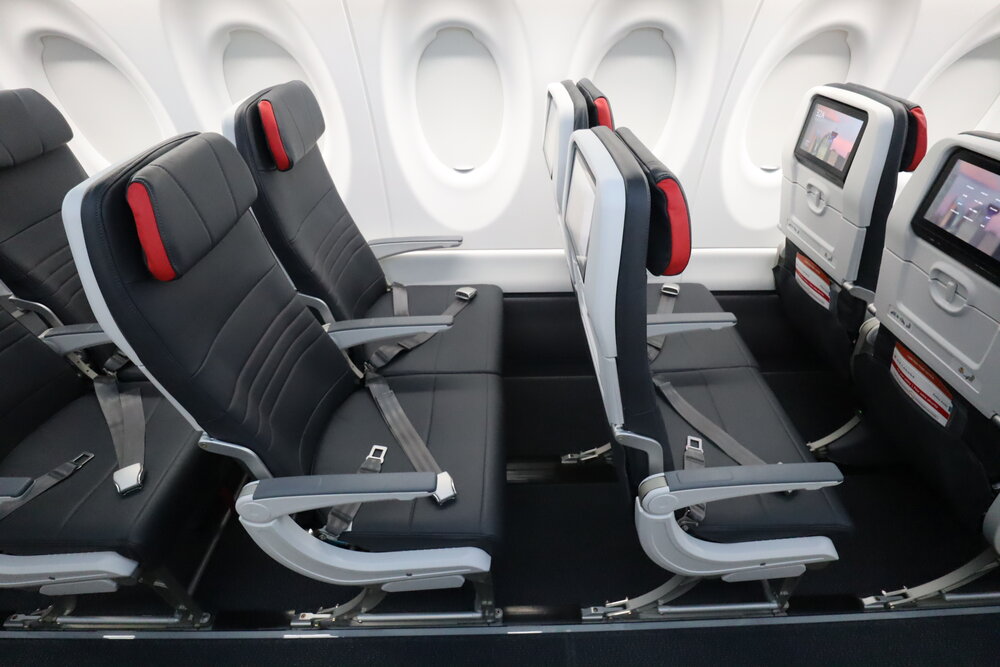
Air Canada Airbus A220 – Economy class “2” seats
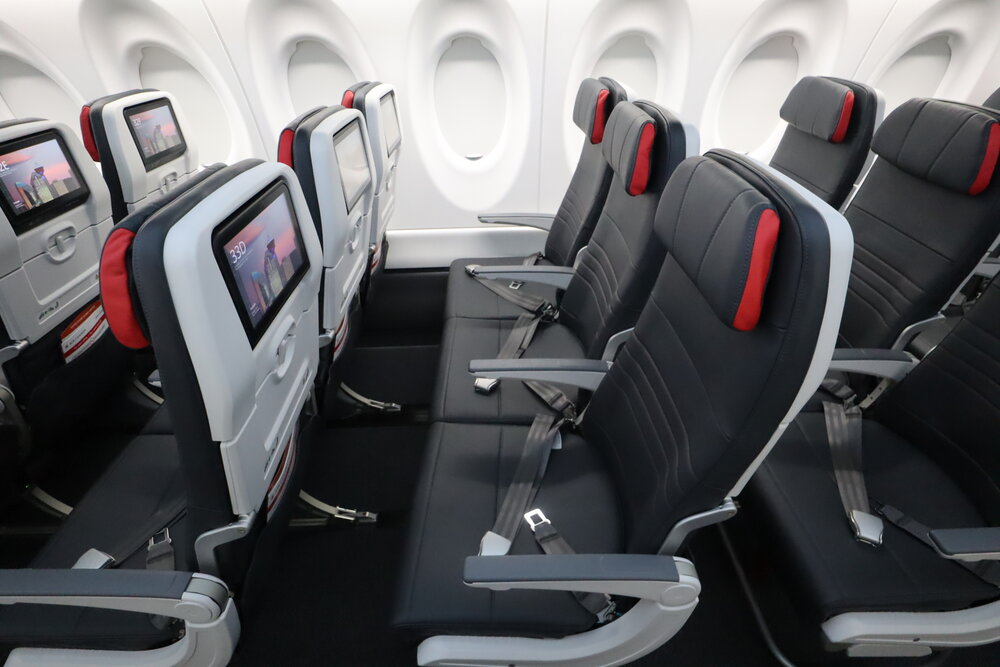
Air Canada Airbus A220 – Economy class “3” seats
The overhead storage bins were also an impressive size, and I look forward to no longer having to jam my carry-on suitcase into the overhead bins, which was a regular occurrence on the Embraer 190 and the other older planes.
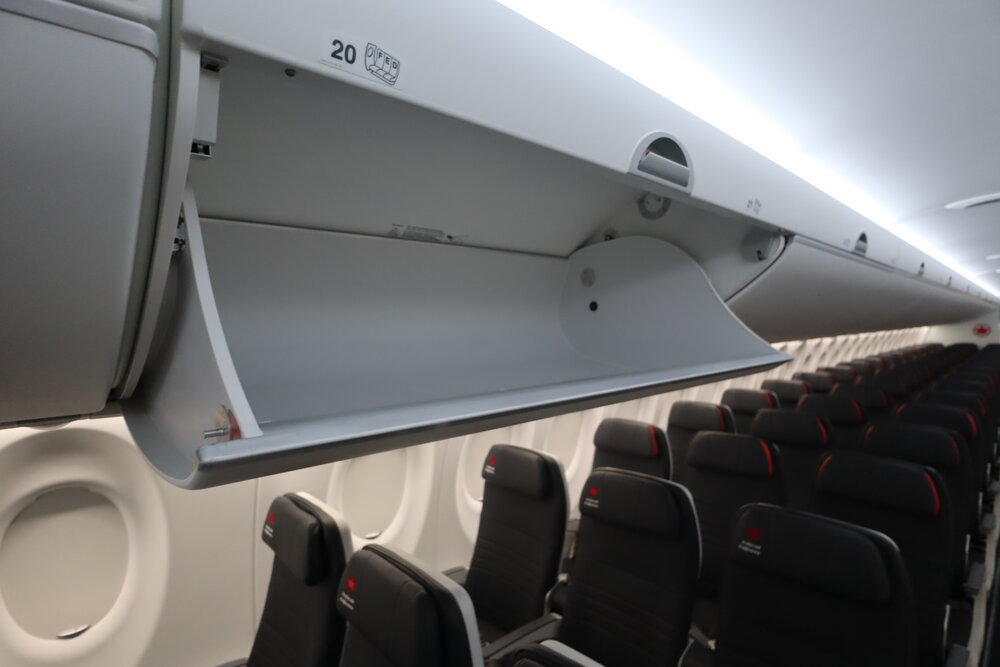
Air Canada Airbus A220 – Overhead storage bins
Every seat in both cabins is equipped with USB A, USB C, and 110V power outlets, as well as a Panasonic in-flight entertainment system featuring more than 1,000 hours of film and TV entertainment. The Airbus A220 is also fully equipped with wifi, and offers additional high-tech features such as ambient and customizable LED mood lighting to combat fatigue and jet lag.
The aircraft also supposedly makes for one of the quietest flights you’ll ever take, and I overheard one of the crew members saying that they must take care not to gossip about passengers in the galley on this aircraft, since the noise really carries! 😉
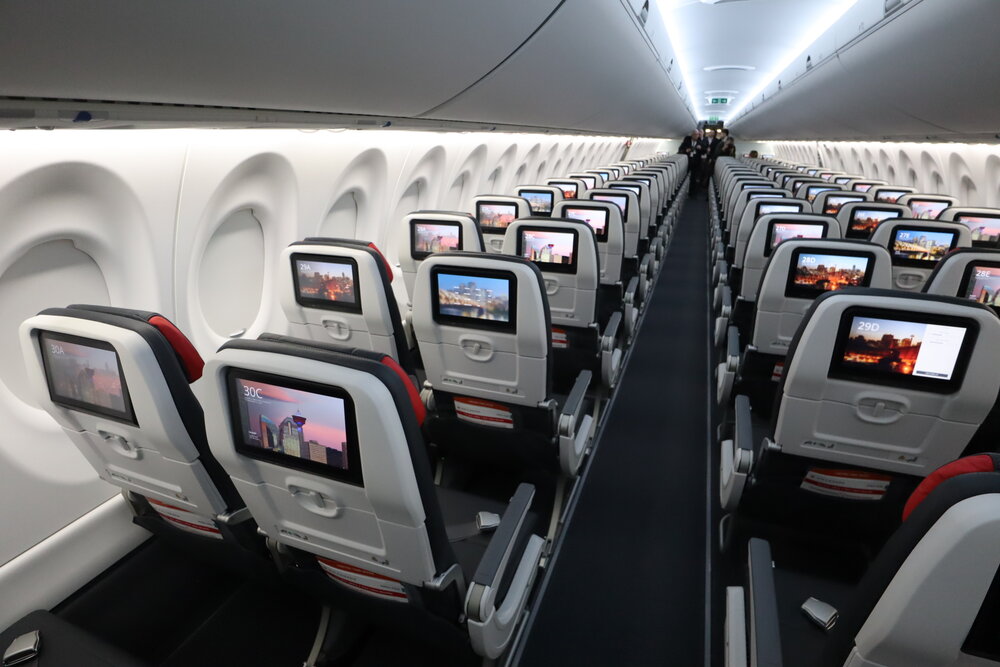
Air Canada Airbus A220 – Economy class
Finally, a look at the restrooms: the business class restroom in the forward cabin is a very respectable size…
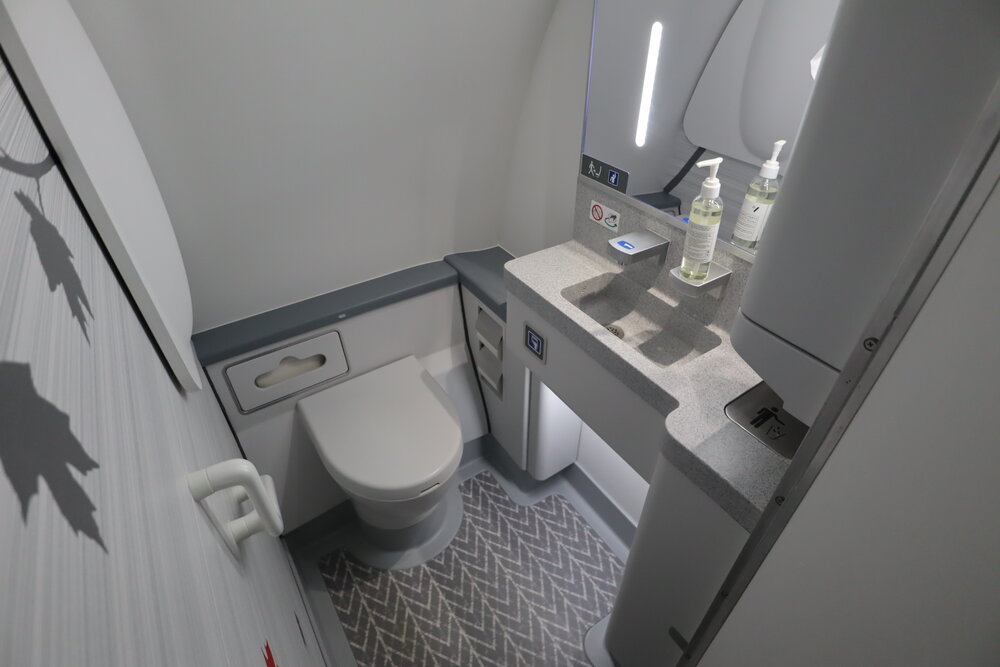
Air Canada Airbus A220 – Business class restroom
…whereas the two economy class restrooms are positioned side-by-side in the aft cabin, with the ability to remove the wall in the middle for passengers who require wheelchair access. That’s the first time I’m seeing restrooms arranged like this on a plane, although I must say it’s quite an ingenious solution with passenger accessibility in mind!
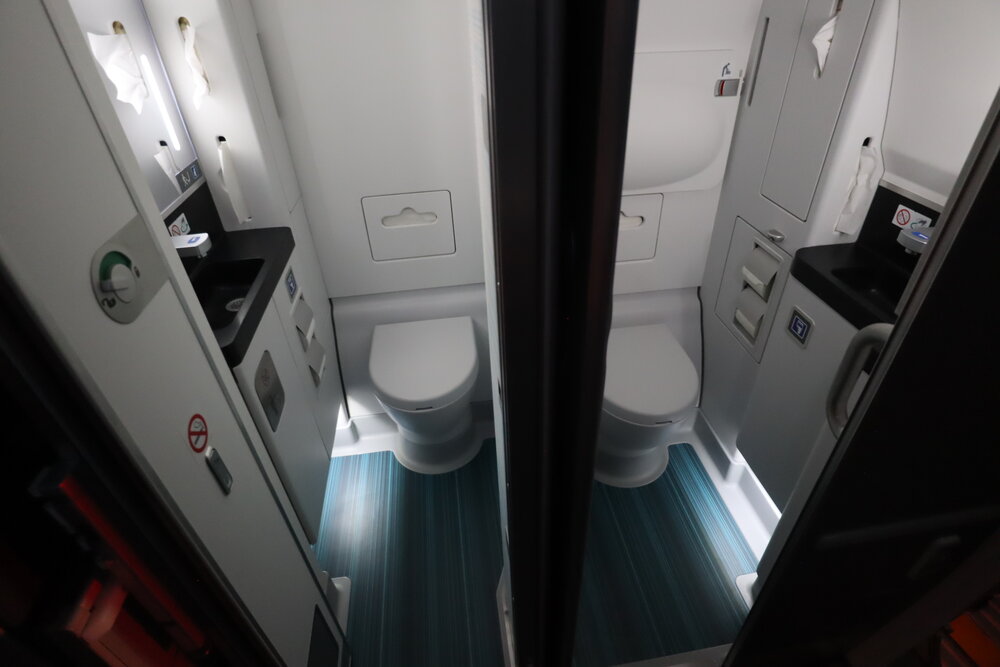
Air Canada Airbus A220 – Economy class restrooms
After a tour of the cabin, I’m definitely looking forward to taking my first flight on brand-new Air Canada planes.
I had actually flown on a Swiss A220 earlier this month between London and Geneva, but I was way too fatigued to pay close attention to any of the aircraft’s features at the time, and Swiss also doesn’t offer proper business class seats on its intra-European flights. I expect that a longer journey on Air Canada’s brand-new planes will allow me to get a fuller taste of the Airbus A220 experience.
Bonus: Some Details on the New Air Canada Loyalty Program
Also in attendance at the Airbus A220 launch event was Mark Nasr, Vice President of Loyalty & E-Commerce at Air Canada, who is spearheading the transformation from the current Aeroplan program into a new Air Canada loyalty program in 2020.
I had the chance to chat with Mark about the future of Aeroplan and bring up some of the concerns that have been on members’ minds in recent months, and Mark went on record to confirm quite a few details for us.

There’s a lot to say about what we know so far, and I’ll be making a video later this week to go through everything in detail. For now, below are the high-level points that Mark confirmed:
-
Air Canada is targeting a launch date of Q3 2020 for the new program.
-
Air Canada endeavours to announce the full details of the new program many months in advance, leaving no room for “surprises” for members at the time of launch.
-
-
On the redemption side, there is a need to balance the different underlying economics between intra-North America redemptions and international partner redemptions (especially in premium cabins).
-
As a result, we will likely see intra-North America flights move to a more dynamic system, where almost every seat is available but at varying price points.
-
Meanwhile, partner redemptions will likely remain fixed, and Air Canada recognizes the transparency and trust that comes from having a published award chart.
-
-
Air Canada recognizes that the migration to the Amadeus PSS has resulted in some friction around the program.
-
The migration was very much a necessary step for the launch of the new loyalty program and many other planned advancements.
-
The new system was implemented after a two-year project involving 700,000 hours of development, and as with any IT project of this magnitude, a transition period is normal and issues do arise.
-
The operational issues are improving month-by-month, although Air Canada knows they have more work to do and is committed to clearing up this “noise” as soon as possible.
-
-
The ability to add a second stopover on round-trip Aeroplan redemptions (a key component to the Aeroplan Mini-RTW) has only temporarily been disabled, and was necessary because of the PSS migration, but will be returning with the new loyalty program.
-
There will be exciting new products and offers from all three credit card issuers (TD, CIBC, and Amex), including a wider range of card features than what’s currently available.
As I mentioned, I’ll be making a video to discuss each of these points in further detail and provide my impressions and analysis of what I learned through my conversation with Mark, so look out for that later this week.
Conclusion
Air Canada’s unveiling of its brand-new Airbus A220 aircraft represents a hugely important step in its efforts to modernize its fleet and grow its North American route network. The new planes deliver an unparalleled passenger experience in both business and economy while also opening up new markets for domestic and transborder flights, and they look set to become an extremely popular choice among Air Canada flyers as they enter the fleet. I look forward to stepping onboard a flight on the Air Canada Airbus A220 as soon as I can!











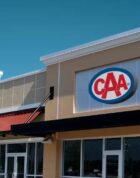

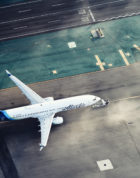

"The ability to add a second stopover on round-trip Aeroplan redemptions (a key component to the Aeroplan Mini-RTW) has only temporarily been disabled, and was necessary because of the PSS migration, but will be returning with the new loyalty program."
This is welcome news, but at what cost in points? Will multiple stopovers still be able to be booked by phone agents?
Both are unconfirmed as yet. We should hear more updates soon!
I’m 6"3 (190cm), what’s the pitch like in economy? Seat guru is saying 30-32. I typically find my knees up against the seat in front and god forbid if they have those foot rests then my shins…
The 2+3 layout in economy is a GAME-CHANGER IMO.
Couples: CHECK
Families with 1 kid: CHECK
Families with 2 kids: CHECK ( take two rows )
Families with 3 kids: CHECK ( Take the whole row )
3+3 is a HORRIBLE layout and only really works for groups of 3… that’s it.
3-3-3 is also bad on the 777s and 787-9.
This is why I LOVE the old 767s 2-3-2 and even the 787-8 that are in 2-4-2. More flexible.
Fully agree! I did find myself considering where I’d choose to sit if I were a solo traveller, and I’d probably pick the window seats on the "2" side.
Great News! Thank you Ricky.